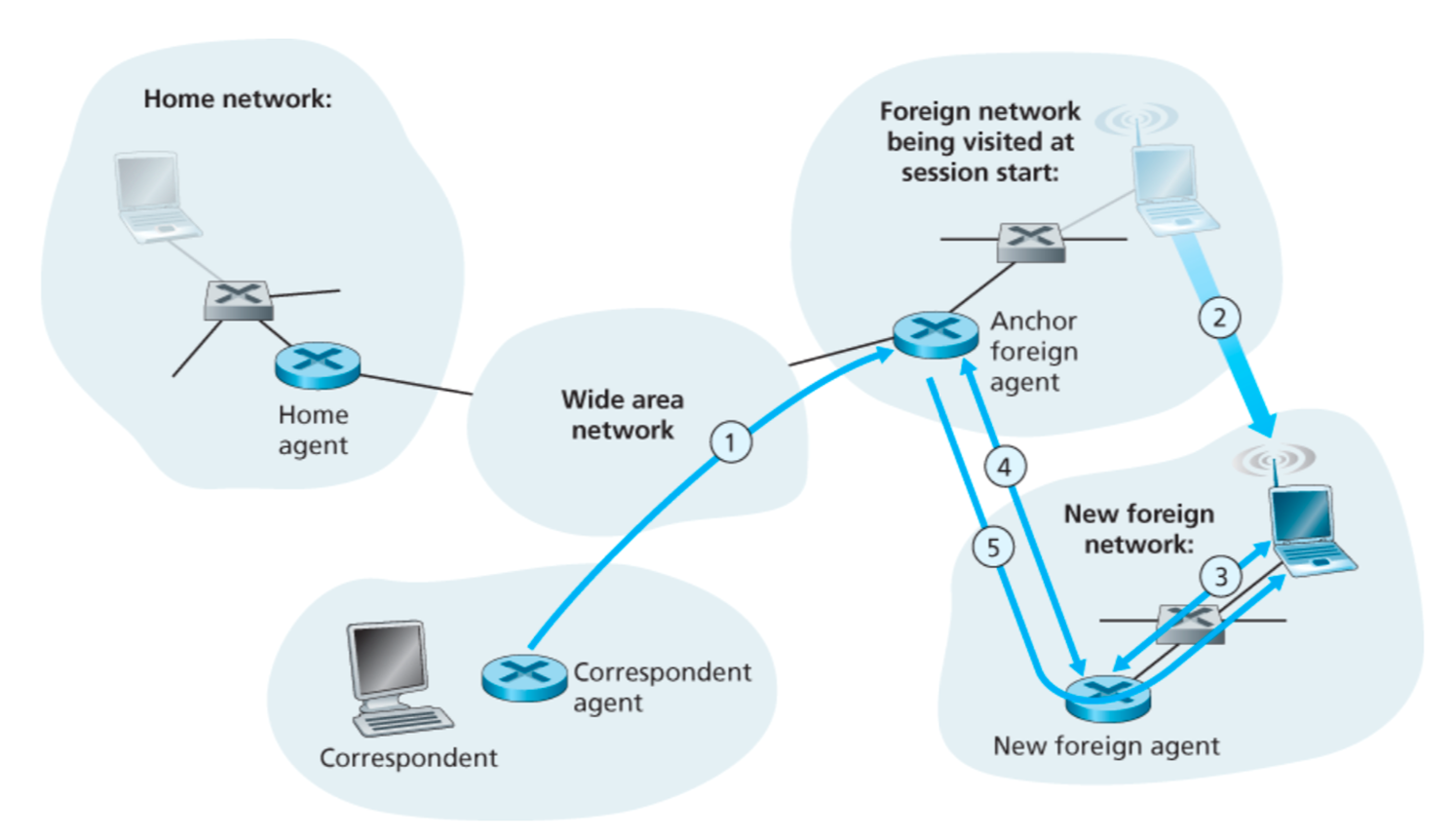Mobility is a spectrum:
- No mobility: Mobile wireless user, using same Access Point
- More mobility: Mobile user, connecting/disconnecting from network using DHCP
- High mobility: Mobile user, passing through multiple access points while maintaining ongoing connections (like cell phone)
Vocabulary
- Home network: “home” of mobile (e.g. 128.119.40/24)
- Permanent address: address in home network, can always be used to reach mobile
- Remains constant
- e.g. 128.119.40.186
- Home agent: Entity that will perform mobility functions on behalf of mobile, when mobile is remote
- Visited network: Network in which mobile currently resides
- e.g. 79.129.13/24
- Care-of-address: Address in visited network
- e.g. 79.129.13.2
- Foreign agent: Entity in visited network that performs mobility functions on behalf of mobile
- Correspondent: Wants to communicate with mobile
Approaches
- Let routers handle it
- Routers advertise permanent address of mobile-nodes-in-residence via usual routing table exchange
- Routing tables indicate where each mobile located
- No changes to end-systems
- Not scalable to millions of mobiles
- Let end-systems handle it (two ways)
- Indirect routing
- Direct routing
Indirect Routing
- Communication from correspondent to mobile goes through home agent
- Home agent forwards to foreign agent
- Foreign agent forwards to mobile
- Mobile replies directly to correspondent
- Requires packet encapsulation along the way (TODO look at the Packet Encapsulation slide)
- Mobile uses two addresses:
- Permanent address - used by correspondent (hence, mobile location is transparent to correspondent)
- Care-of-address - used by home agent to forward datagrams to mobile
- Foreign agent functions may be done by mobile itself
- Triangle routing: Correspondent-home-network-mobile
- Inefficient when correspondent and mobile are in same network
Direct Routing
- Correspondent asks home network for foreign address of mobile
- Home network responds with foreign address
- Correspondent sends to foreign agent
- Foreign agent forwards to mobile
- Mobile replies directly to correspondent
Registration
- Mobile contacts foreign network on entering visited network
- Foreign agent contacts home agent home: “this mobile is resident in my network”
End result:
- Foreign agent knows about mobile
- Home agent knows location of mobile
Mobility Through Multiple Foreign Networks
